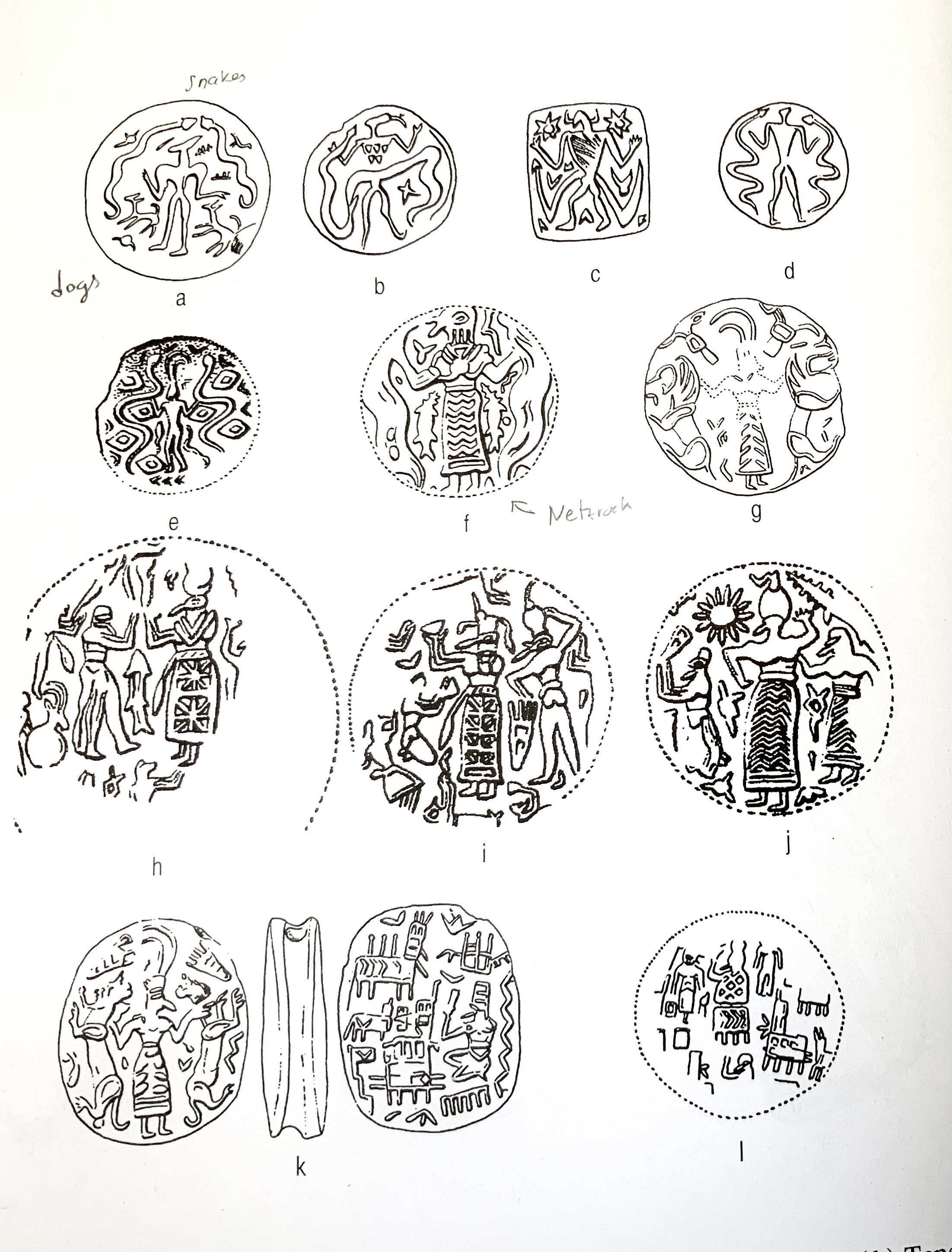stamp - pannous/hieros GitHub Wiki
𐱃𐰢𐰍𐰀 stamga
𒍠 #šimtu stamp סִימָן simán semn semantic sign (mark) 𓊗 •śimpti 𓊃 𓊪 𓊗 šimᵖti 𒋆𒋾 sami "color"
𒍠 ZA₃ 𒍦 zib #şibbu צֶבַע ᵗzéva (color) Ziffer paint 𒍠 pāţu ≈ 𓎛 𓊪 𓏏 𓂘 𓂝
Preceded by Bulla seal 8th millennium BC onwards
The Halaf culture saw the earliest known appearance of stamp seals in the Near East, first made in the 4th millennium BC, and probably earlier.
https://en.wikipedia.org/wiki/Ancient_Near_Eastern_seals_and_sealing_practices
Syrian stamp seals developed into iconography of elaborate rituals during the late Ubaid and early Uruk period in Susa

Stamp seal were prominent in the Halaf culture, in Anatolia and the Zagros mountains before descending into the southwest Ubaid, where they were transformed into cylinder seals
Archaeologists prize tamgas as a first-rate source for the study of present and extinct cultures.
when labor distributions within clans developed, various tamgas, drawings, notes, and earmarks have been used as an identification sign for labor instruments and utilities as well as in domestication of animals.
Tamgas are also stamped using hot irons on domesticated animals (such as horses in present-day Mongolia)
The Turks who remained pastoral nomad kings in eastern Anatolia and Iran continued to use their clan tamgas
The President of Mongolia also passes the tamag "state seal" during the transition to a new president
symbol ⇔ emblem (≠ Blume) of a particular tribe, clan or family.
ἐμβάλλειν embállein ballo.que place ⇔ plaque
In Russia, the term tamga (тамга) survived in state institution of border customs, with associated cluster of terms: tamozhnya (таможня, customs), tamozhennik (таможенник, customs officer), rastamozhit' (растаможить, pay customs duties), derived from the use of tamga as a certificate of state.
Tamgha-i-Imtiaz or Tamgha-e-Imtiaz (Urdu: تمغہ امتیاز), which translates as "medal of excellence", is fourth highest honour given by the Government of Pakistan to both the military and civilians.
In Egypt, the term damgha (Arabic: دمغة) or tamgha (تمغة) is still used in two contexts. One is a tax or fee when dealing with the government. It is normally in the form of stamps that have to be purchased and affixed to government forms, such as a driver license or a registration deed for a contract
Heraldry (/ˈhɛrəldri/) is a broad term, encompassing the design, display and study of armorial bearings (known as armory, coat of arms), as well as related disciplines, such as vexillology, together with the study of rank, pedigree and ceremony. ( moniker name:)
Mon (紋), also monshō (紋章), mondokoro (紋所), and kamon (家紋), are Japanese emblems used to decorate and identify an individual, a family, or (more recently) an institution or business entity. While mon is an encompassing term that may refer to any such device, kamon and mondokoro refer specifically to emblems used to identify a family
A crest is a component of a heraldic display
supporters, badges, heraldic banners and mottoes.